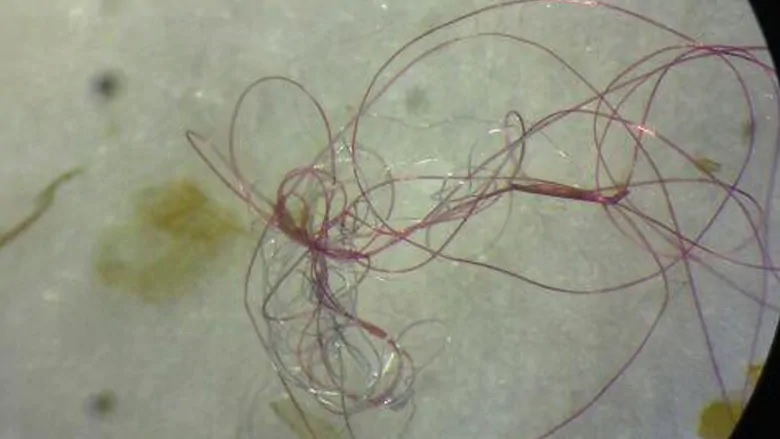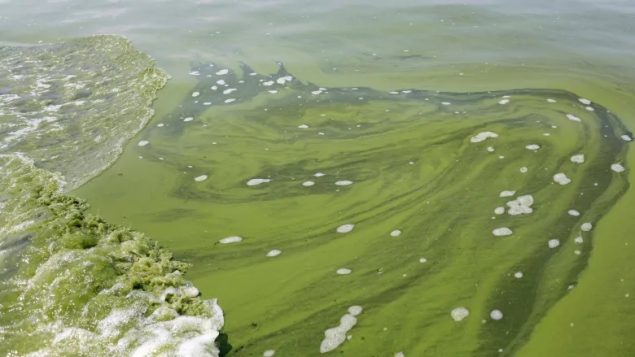It’s World Water Day–an annual event when the United Nations and anybody and everybody else who cares to try to make things just a little better brings attention to what’s going on with the world’s water supply.
And, in case you might have missed it, things are not going especially well.

Exceedingly fine plastic fibres found inside the body of a Great Lakes fish. Scientists who have reported that the lakes are awash in tiny bits of plastic are raising new alarms about a little-noticed form of the debris turning up in sampling nets: synthetic fibres from garments, cleaning cloths and other consumer products. (Rachel Ricotta/Associated Press)
We in North America get to see that close up.
Canada and the U.S. share the Great Lakes, the largest body of fresh water on the globe, one-fifth of freshwater surface on the planet.
When it comes to the Great Lakes: pollution rules.

Kelly Jazvac’s Impel with Puffs exhibition was shown at Toronto’s Diaz Contemporary, in 2013. All the pieces were made from plastic destined for landfills. (Courtesy of Kelly Jazvac)
When it comes to solving the problem: um, say what?
And the bad news just keeps coming.
A study released Thursday found the Great Lakes region is warming faster than the rest of the U.S., a trend that is likely to bring more extreme storms while degrading the water quality in the lakes, worsening erosion , making things tougher on farmers in the region.
Kelly Jazvac, is a associate professor of studio arts at Montreal’s Concordia University.
Jazvac, who works in sculpture, installation, and collage, is also a member of the
Synthetic Collective.

Kelly Jazvac, an associate professor at Concordia University and a member of the Synthetic Collective, is deeply involved in trying to convince the world that it’s time we did something about water pollution. (Courtesy: Concordia University)
The organization describes itself as an “interdisciplinary collaboration between visual artists, cultural workers and scientists” working together “to sample, map, understand, and visualize the complexities of plastics and micro-plastics pollution in the Great Lakes Region.”
I spoke by phone Thursday with Jazvac about what what the collective is trying to achieve and how they are going about it.
medianet id=”8062119″ mp3=”http://medias-balado.radio-canada.ca/diffusion/2019/03/balado/rci/EN_Interview_4-20190322-WIE40.mp3″ fichier=”EN_Interview_4-20190322-WIE40″ description=”Concordia professor, artist and activist Kelly Jazvac discusses different approaches in the battle against pollution in the Great Lakes. (CBC News/Google maps) ” titre=”EN_Interview__4″ image=”https://www.rcinet.ca/en/wp-content/uploads/sites/3/2019/03/maplakes.jpg” balado=”true” embed=”false” complete_show=”-1″ applicationCode=”medianet”]







For reasons beyond our control, and for an undetermined period of time, our comment section is now closed. However, our social networks remain open to your contributions.